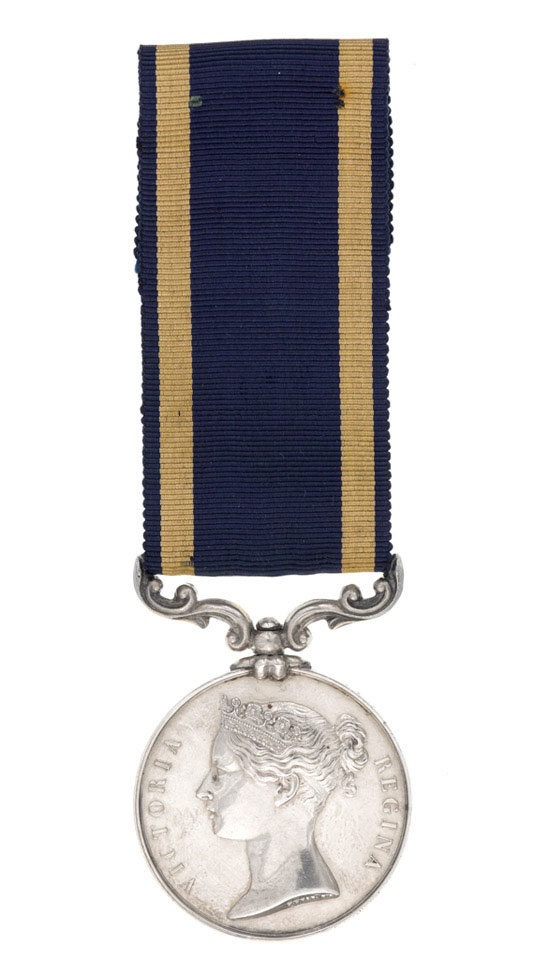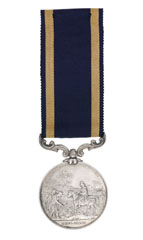
Online Collection
Punjab Campaign Medal 1848-49
Awarded to Capt William Barr, 1st Company 5th Battalion Bengal Artillery, 1849.
Circular silver medal designed by William Wyon (1792-1851),with, on the obverse, Queen Victoria wearing a diadem, with the inscription, 'Victoria Regina'; on the reverse, a scene showing the surrender of Sikh forces to Sir Walter Gilbert (1785-1853), with the date, '1849', in Roman numerals, and the inscription, 'To the Army of the Punjab'. The medal is suspended from a dark blue ribbon with two yellow vertical stripes.
Barr was born in London on 19 April 1812 in London. He arrived in India on 30 May 1830. He fought in the 1st Afghan War (1838-1842), and wrote an account of the campaign, 'Journal of march from Delhi to Peshawar and Caubul and Narrative Operations in the Khyber Pass'. He served during the Indian Mutiny (1857-1859), rising to the rank of Colonel in 1862; he retired the following year but became an honorary major general in 1876, but unfortunately died the same year.
This medal was awarded to the officers and men of the British Army and Bengal Army who served in the Punjab between 7 September 1848 and 14 March 1849.
In 1848, two British officials sent to take control of the Sikh province of Multan were murdered, and the whole of the Punjab rose in revolt). After two minor actions Sir Hugh Gough finally encountered the main Sikh army under Sher Singh at Chilianwala (13 January 1849). The Sikhs eventually withdrew under cover of darkness, taking with them three captured British colours. Although the British were left in possession of the battlefield, Chilianwala could scarcely be called a victory. Gough's force had incurred over 2,300 casualties, including over 1,000 British.
British public opinion was horrified at the scale of casualties, and pressure grew for Gough to be replaced. Before this could happen, the final action of the war was fought at Gujerat, about 120 km. north of Lahore, on 21 February 1849. Gough had by now assembled an army of some 24,000 with which to attack a Sikh force estimated at 60,000. After an artillery duel lasting some two and a half hours, Gough ordered his infantry forward in a general advance. Although Sikh resistance was fierce, they were eventually forced to give ground, and the retreat soon became a rout. On 14 March, the remains of the Sikh army surrendered at Rawalpindi. The Punjab was annexed to British India, and the Sikh state lost its independence.
NAM Accession Number
NAM. 1951-03-8-1
Copyright/Ownership
National Army Museum Copyright
Location
National Army Museum, Study collection
Object URL
https://collection.nam.ac.uk/detail.php?acc=1951-03-8-1


